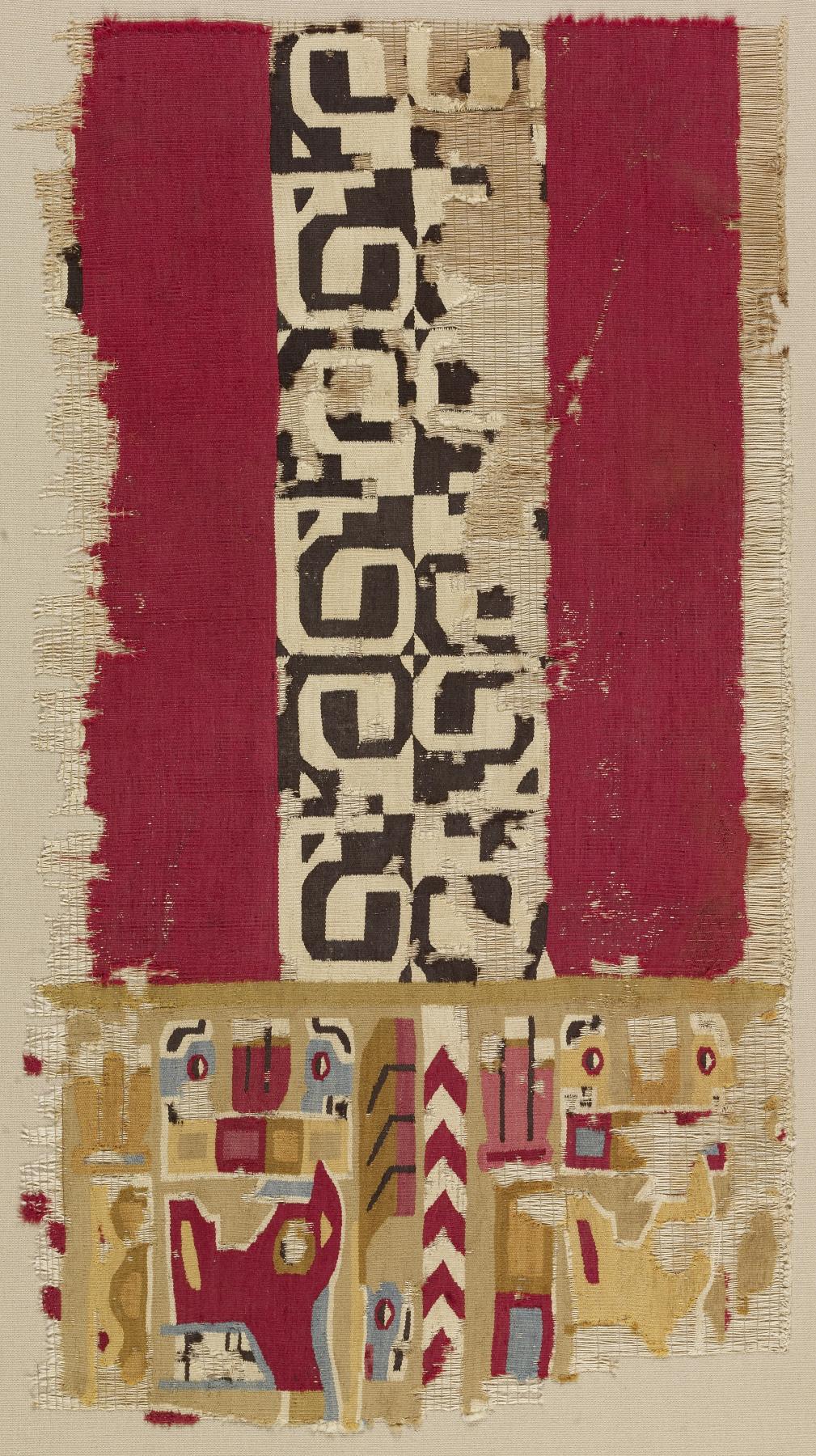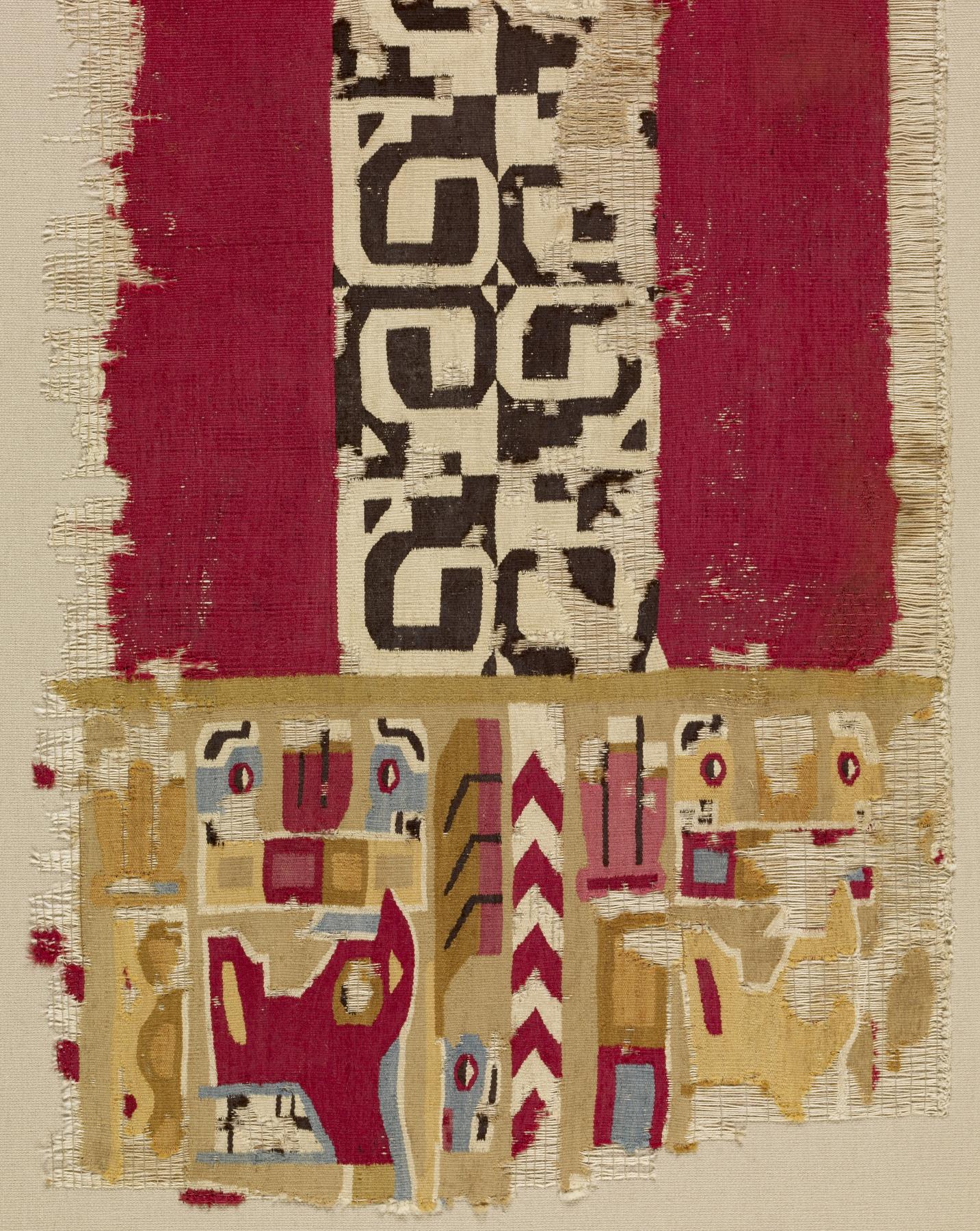Tunic Fragment
(Ancient Americas )
This is a fragment of what would have been an incredibly arresting Huari tunic, with the black and white stepped fret on a red background, interspersed with staff-bearing figures below (only the tops of the figures have survived.) This hints at the powerful religious tradition that had spread from the site of Tiwanaku in Bolivia to the central coast of Peru and was conveyed in a great deal of Huari art. This figure, shown in profile holding a staff, is based on a central figure at Tiwanaku’s Gateway of the Sun monument, and represents a deity likely related to the worship of the sun, or to a supreme primordial deity similar to the Inca god Viracocha.
Provenance
Provenance (from the French provenir, 'to come from/forth') is the chronology of the ownership, custody, or location of a historical object. Learn more about provenance at the Walters.
Purchased by Georgia de Havenon, New York; given to Walters Art Museum, 2016.
Exhibitions
| 2012-2013 | Exploring Art of the Ancient Americas: The John Bourne Collection Gift. The Walters Art Museum, Baltimore; Frist Center for the Visual Arts, Nashville. |
Geographies
Peru, South coast (?) (Place of Origin)
Measurements
H: 19 x W: 10 1/2 in. (48.26 x 26.67 cm)
Credit Line
Gift of Georgia and Michael de Havenon, 2016
Location in Museum
Not on view
Accession Number
In libraries, galleries, museums, and archives, an accession number is a unique identifier assigned to each object in the collection.
In libraries, galleries, museums, and archives, an accession number is a unique identifier assigned to each object in the collection.
2011.20.4




